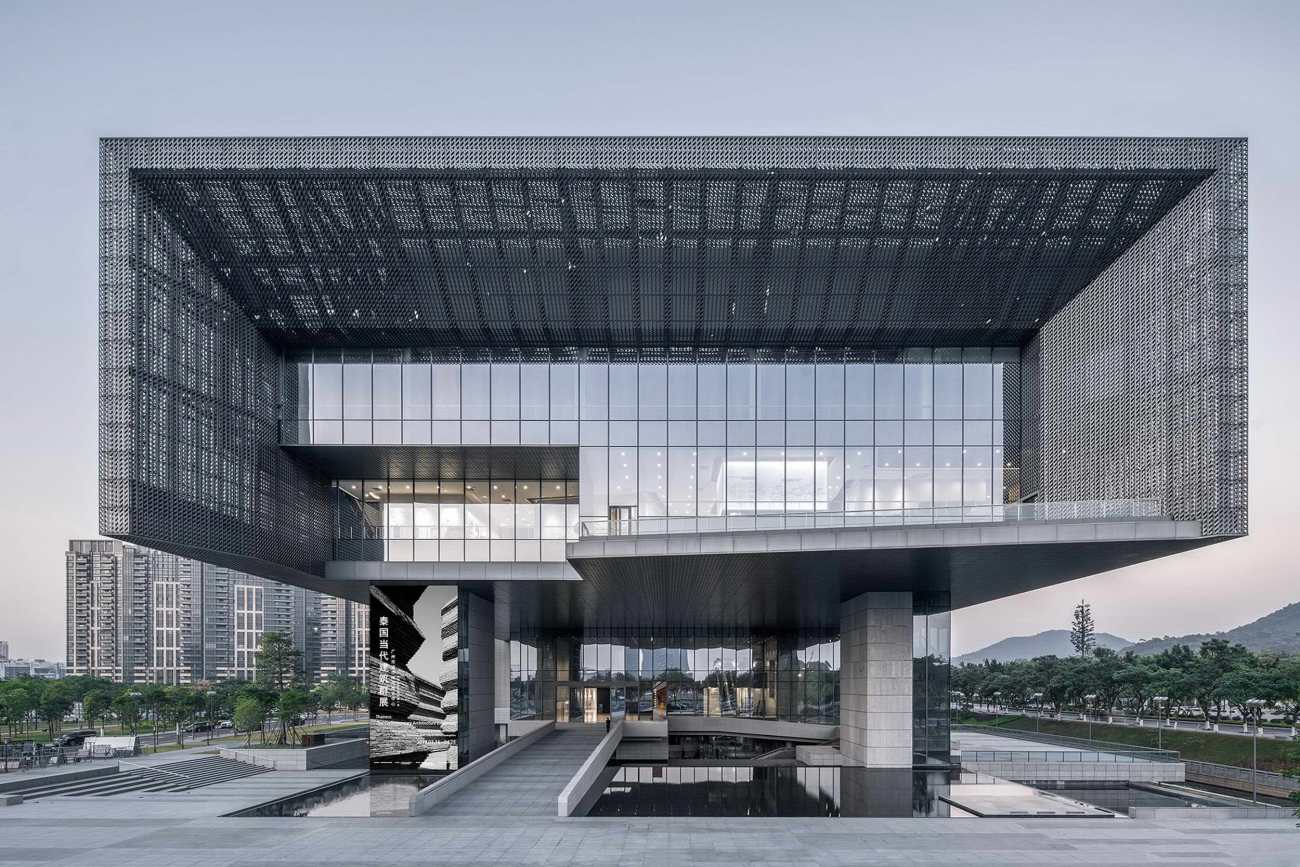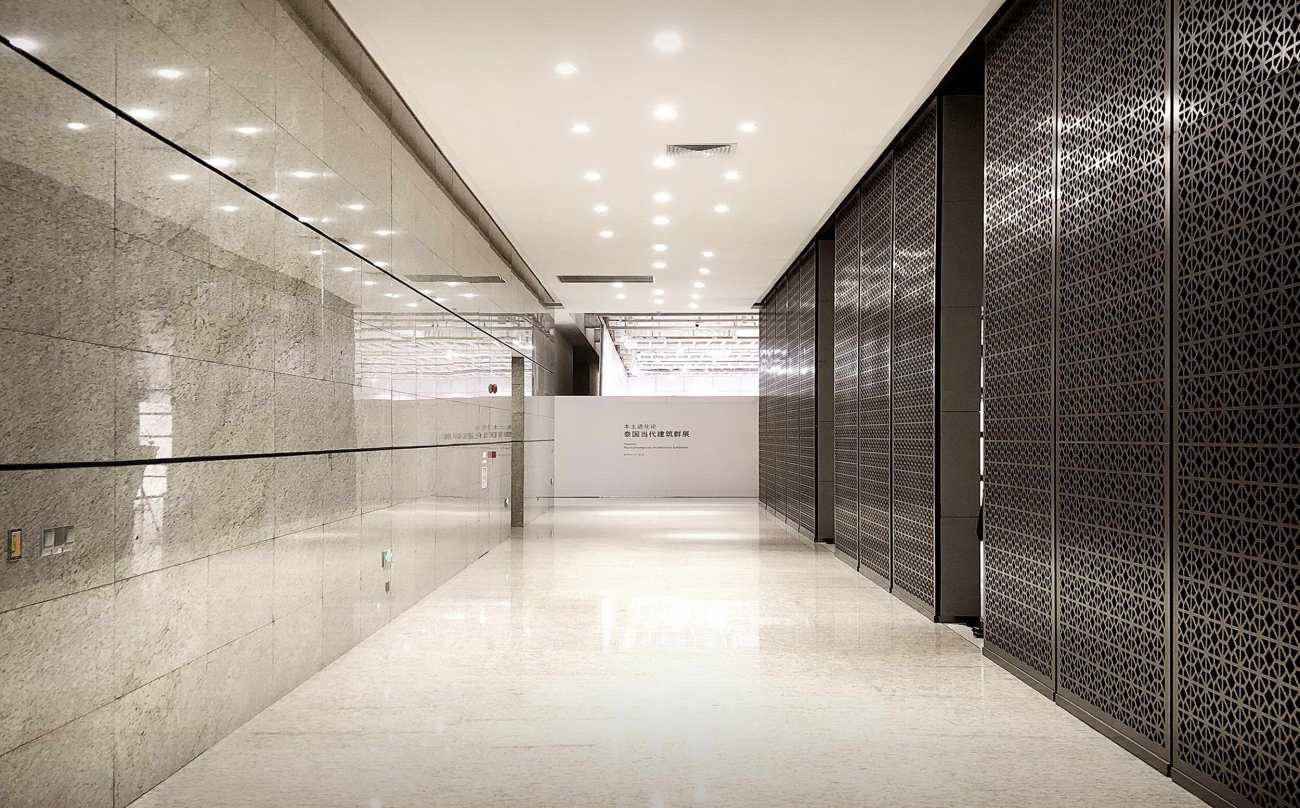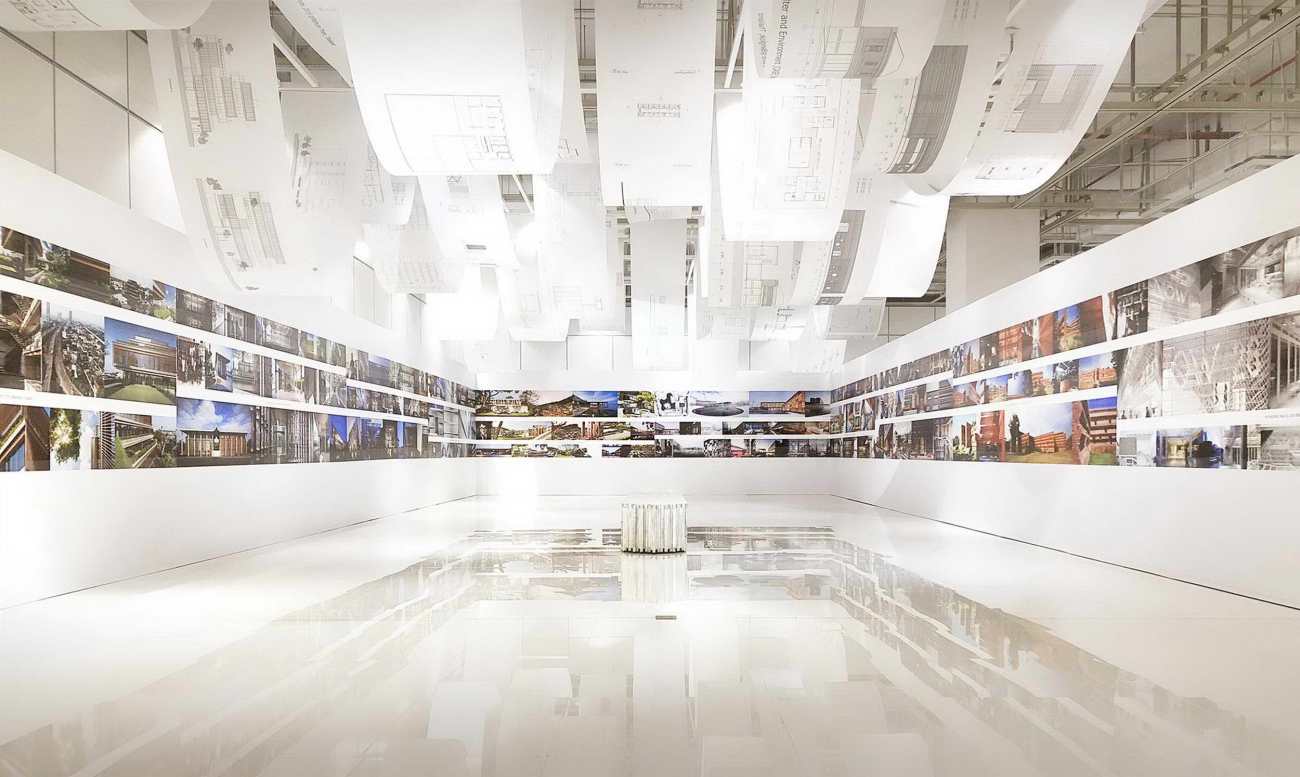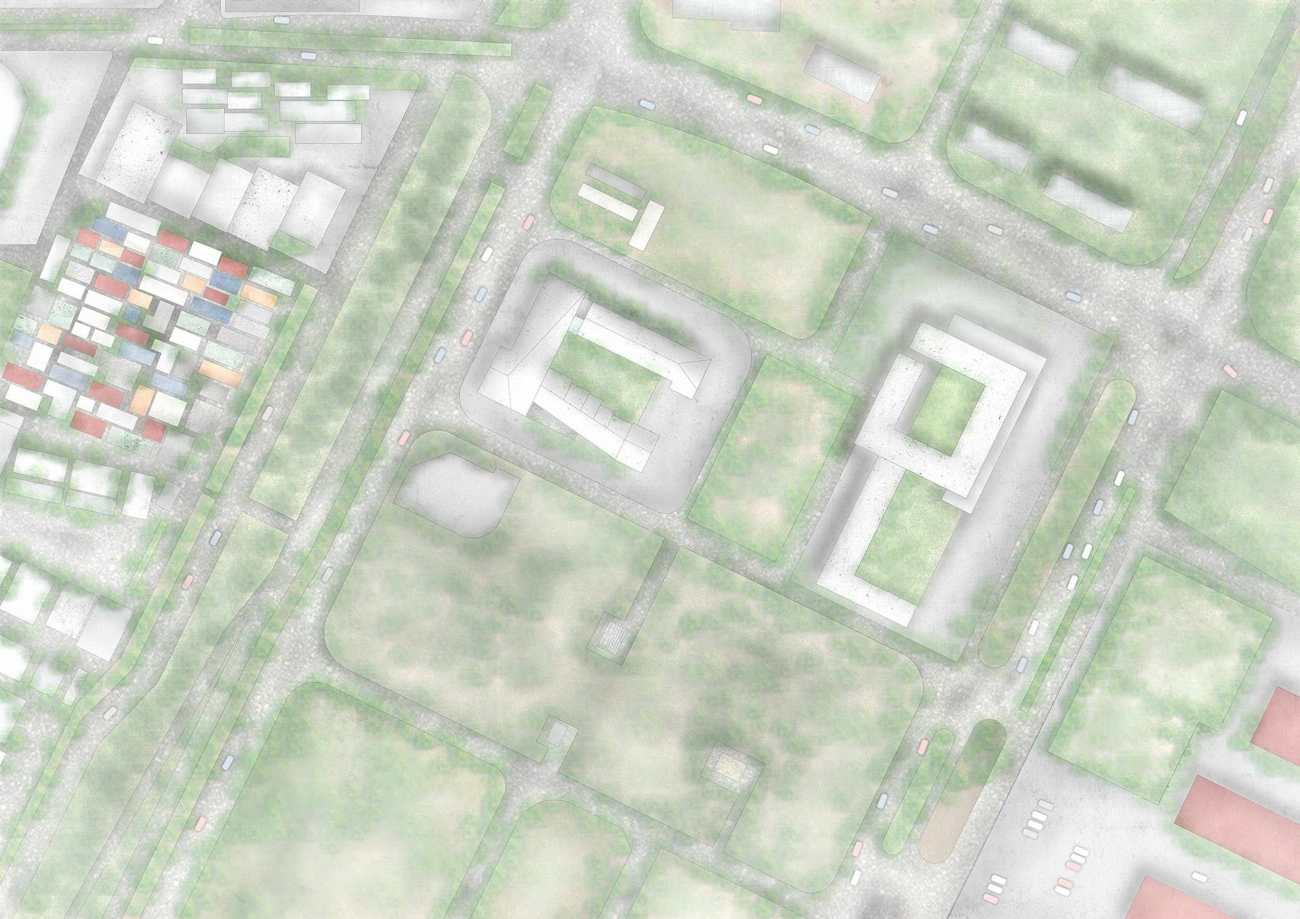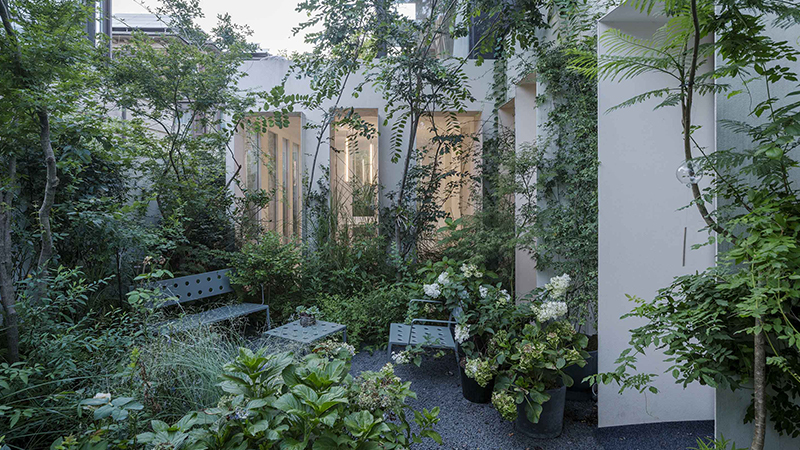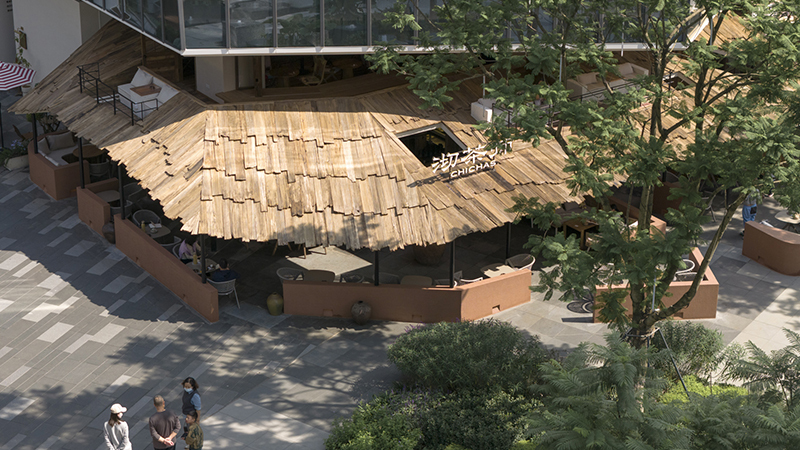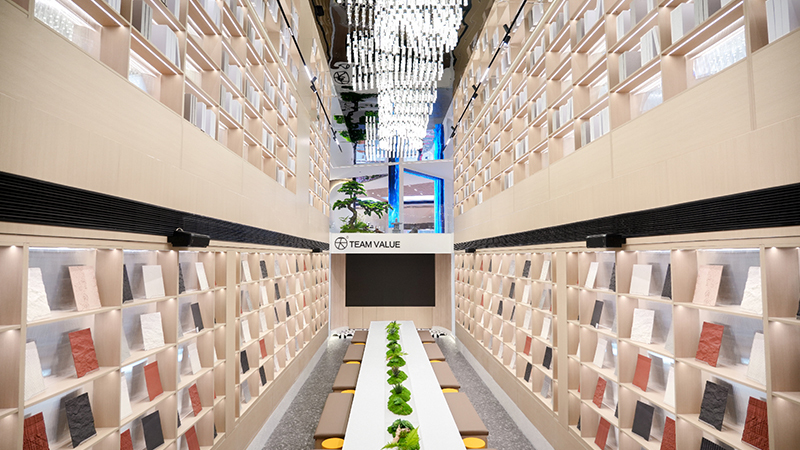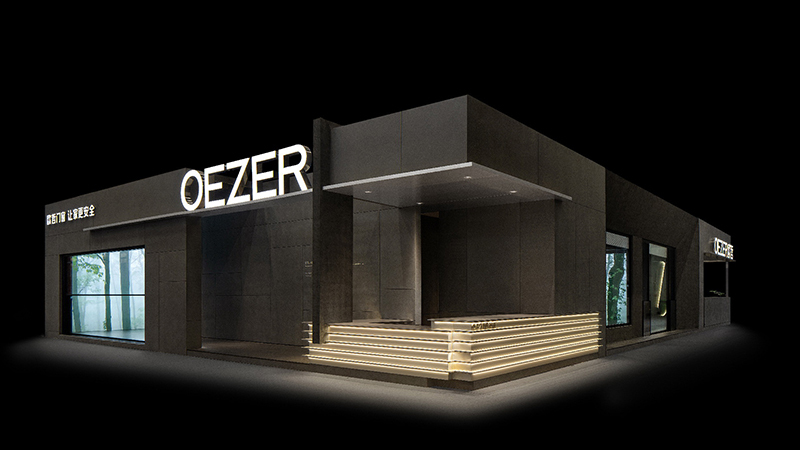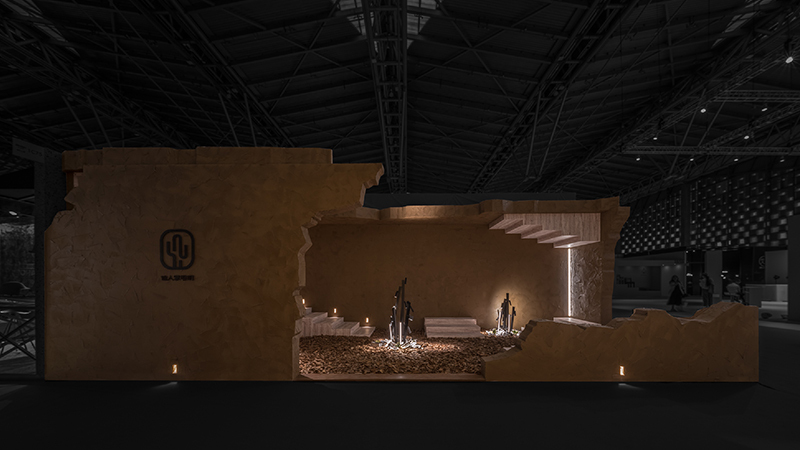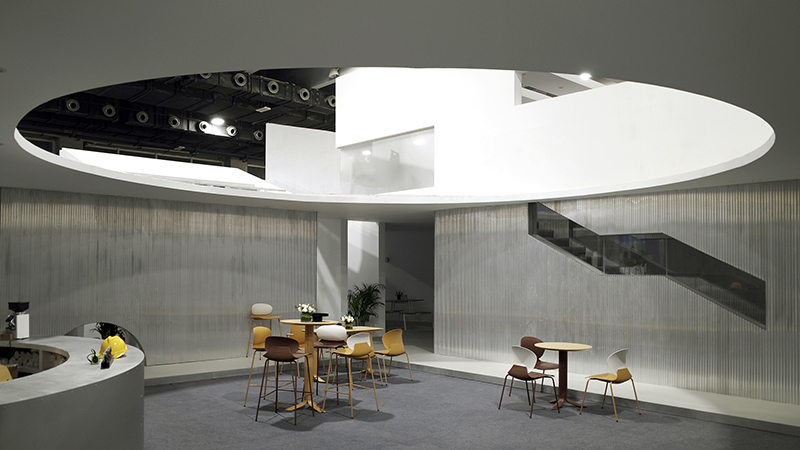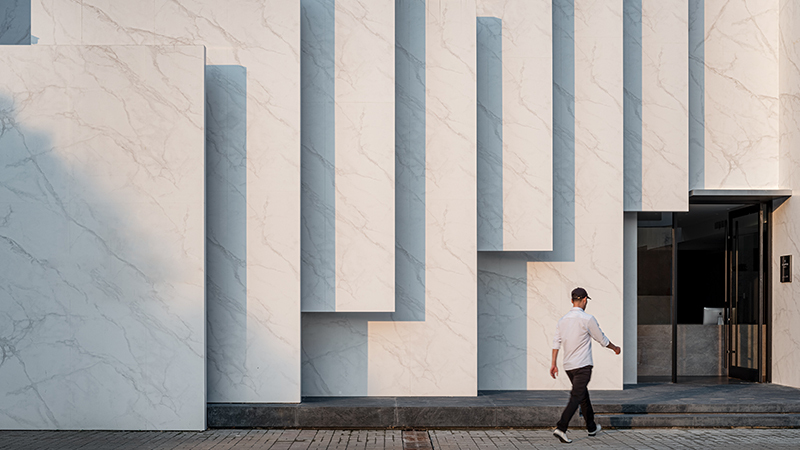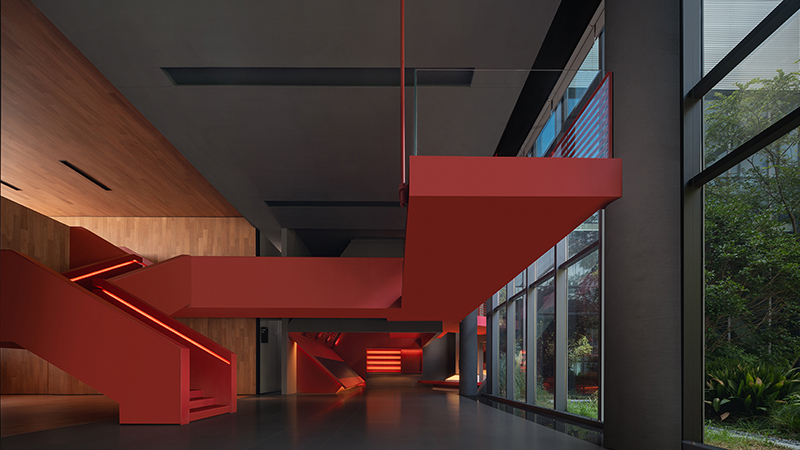HAS design and research受广州市城市规划展览中心的委托,设计亚洲目前最大的“泰国当代建筑群展”。此次展览邀请策展人与评论家的洪人杰先生,与12间泰国重量级建筑事务所,总共18位泰国知名建筑师共同参与在广州的第一个群展。
HAS design and research was commissioned by Guangzhou Urban Planning Exhibition Center to design “Thai Contemporary Architecture Exhibition”. The exhibition invited Mr. Jenchieh Hung who is the curator and critic of “Thai Contemporary Architecture Exhibition” in Asia together with twelve well-known Thai architect firms to have large exhibition in Guangzhou.
▼展览所在地──广州市城市规划展览中心 Exhibition venue─Guangzhou Urban Planning Exhibition Center
我们提出的核心问题是:「为何当下的展览空间像是速食餐饮般的毫无鉴别度?展览不应该把展品从仓库移动到另一个大仓库中,更应该是空间本身与场地有著紧密关系。」在这个展览设计中,我们用来自“泰国”的内容,来呈现或反应“广州”的特质,此展的名称便自然地涌现为“本土进化论──泰国当代建筑群展”。
The main question that HAS design and research raised was “Why is the current exhibition space like a fast food restaurant without any discriminations? Those spaces move the exhibition contents out from storage to another BIGGER storage and the exhibition space does not have any relations with the local context”. In this exhibition design, we used the contents from “Thailand” to reflect the characteristics of “Guangzhou”. The exhibition naturally was named as “Thainess ─ Thai Contemporary Architecture Exhibition”.
▼入口长廊(原貌) Exhibition corridor (original)
▼入口长廊(改造后) Exhibition corridor (after)
▼布料的漂浮、半透与光影变化 Fabric transformation
广州具有丰富且多样的制作工厂,展览所在地的白云区更有著贩售布料的厂家。因此我们选用本地的材料,并让10位泰国设计师以手写泰文的方式(内容为参展的泰国建筑师名称),体现出:材料是当地的,但内容是泰国的。然而轻浮的布料最终让冰冷的原空间意外产生愉悦和轻松感,也让常态的走廊转变成具有仪式感的展览大厅。
Guangzhou has a rich and diverse of manufacture factory, and the Baiyun district where the exhibition is located has several manufactures selling the fabric. Therefore, we use local fabric and asked ten Thai designers to handwritten Thai alphabets (the name of the Thai architect firms participating in the exhibition), reflecting: the material is local, but the content is Thai. Moreover, the frivolous fabric eventually made the cold original space unexpectedly pleasant and relaxed, and also transformed the normal corridor into a ceremonial exhibition hall.
▼泰文产生独特的展览体验 Thai text
▼展览空间入口 Exhibition entrance
参展的12间建筑事务所与18位建筑师,他们的作品向我们呈现泰国建筑的“本土进化论”。其中参展建筑事务所包括:Walllasia、Stu/D/O Architects、Studiomake、Situation based Operation (SO)、Research Studio Panin、Duangrit Bunnag Architect Limited (DBALP)、Department of ARCHITECTURE、Community Architects for Shelter and Environment (CASE)、CHAT architects、Bangkok Project Studio、Architectkidd、all(zone)。这些建筑师多半为1970年前后生,毕业于泰国朱拉隆功大学,尔后至欧美一流学府深造;也有部分从小受西方教育体系,并在海外工作多年,但他们一致以曼谷作为事务所根据地,不局限于区域限制与文化束缚并展现出“谦虚地自主意识”、“平和地设计策略”、“永续地营造思维”等特质。
The twelve participants of architectural firms from Thailand, including Walllasia, Stu/D/O Architects, Studiomake, Situation based Operation (SO), Research Studio Panin, Duangrit Bunnag Architect Limited (DBALP), Department of ARCHITECTURE, Community Architects for Shelter and Environment (CASE), CHAT architects, Bangkok Project Studio, Architectkidd, all(zone). Some of these architects were born around 1970 and have completed their education first at the Chulalongkorn University and then at some of the top institutes in the United States and Europe. The rest of them were educated and have been practicing abroad for many years. Despite the difference in background, all of them choose Bangkok as their base camp to express their ideas in architecture, such as “humble autonomy”, “harmonious design strategy”, and “sustainable construction management.”
▼展览空间 Exhibition hall
▼漂浮与自由的吊顶 Floating ceiling
常态的展览总是会将展品区隔,避免彼此受到影响。但透过对当地聚落与在地人的研究和观察,我们设计“共享”的展览空间,而每个建筑师作品的分隔,反倒以半透明的硫酸纸吊顶做了模糊的分界(硫酸纸在泰国用作为施工图)。这样的空间策略,让喜爱活动的大小家庭在展览空间更加自由,高度变化的吊顶也改变传统阅读展览的方式──让天花成了另一个附加╱隐藏的展示空间。
Comparing with other exhibition space which always separate exhibits when it contains several works together. However, from our research of local village and Cantonese, we designed the “SHARING” exhibition space, each architect’s work separated by tracing papers on the ceiling (tracing paper used in Thailand as a construction drawing). This design strategy given families more free and flexible in exhibition, and created the fuzzy boundary in between. And the highly varied ceiling also changes the way traditional reading exhibitions - making the ceiling become another additional / hidden display space.
▼主展览厅 Exhibition space
▼“追加”的展览空间给予深刻印象 Impressed by the “additional” ceiling display space
▼墙面隐藏著当地砖块的排列方式 The exhibition display represented as a local brick's pattern
「我们所有的设计来自于研究,这些研究探讨当下的社会现象,并反应在建筑中;若未来建筑师没有房子可盖,研究却能纪录着时代的特有现象,让建筑的诗章能继续传承。」— HAS design and research
“All of our designs come from research. These studies explore the current social phenomena and reflect them in architecture. If architect no land to build a house in future, the research will continuously record the unique phenomena of this era, allowing the poems of the architecture to continue to inherit.” — HAS design and research
▼总平面图 Site plan
▼一层平面图 Ground floor plan
项目名称:本土进化论──泰国建筑展馆
设计公司:HAS design and research
参与者:洪人杰(Jenchieh Hung)、Kulthida Songkittipakdee
公司网站:https://hasdesignandresearch.com
联系邮箱:hascontact@yahoo.com
业主:广州市城市规划展览中心
策展人:洪人杰、Kulthida Songkittipakdee、唐玲
项目地址:广州市城市规划展览中心;广州市白云区展览路1号
基地面积:700平方米
建筑面积:500平方米
摄影:战长恒、尚本
展览详情:https://mp.weixin.qq.com/s/iacolY-qnwC3y8XQvyRxzw
Project name: Thainess─Thai Architecture Pavilion
Design company: HAS design and research
Team: Jenchieh Hung, Kulthida Songkittipakdee
Website: https://hasdesignandresearch.com
E-mail: hascontact@yahoo.com
Client: Guangzhou Urban Planning Exhibition Center
Curator: Jenchieh Hung, Kulthida Songkittipakdee, Icicy Tang
Project location: Guangzhou Urban Planning Exhibition Center; No. 1 Exhibition Road, Baiyun District, Guangzhou
Site area: 700 sq.m.
Gross built area: 500 sq.m.
Photo credits: Changheng Zhan, SUNBENZ
Exhibition: https://mp.weixin.qq.com/s/iacolY-qnwC3y8XQvyRxzw
更新日期:2021-03-31 16:00:33
非常感谢 HAS 带来的精彩项目, 查阅更多Appreciations towards HAS design and research for sharing wonderful work on hhlloo. Click to see more works!
